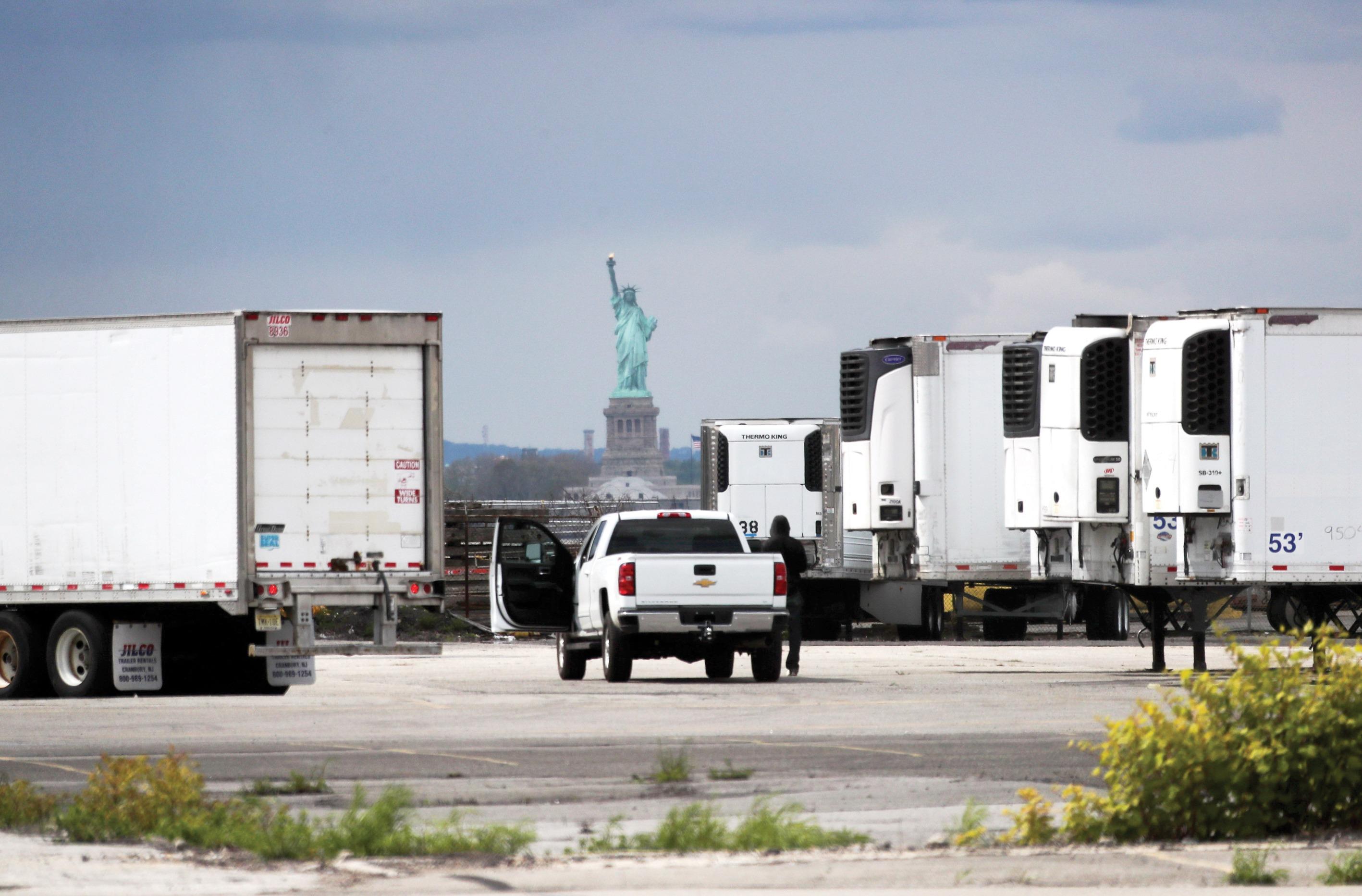First French case of COVID-19 may date back to November, hospital review finds
 Freezers line up at a temporary ground for the dead in New York City on May 11. The first cases of COVID-19 infection were found earlier than initially believed in some US states. (WANG YING / XINHUA)
Freezers line up at a temporary ground for the dead in New York City on May 11. The first cases of COVID-19 infection were found earlier than initially believed in some US states. (WANG YING / XINHUA)
From the coast of the United States to an urban neighborhood in France, emerging reports of the first cases of coronavirus infection have kept people wondering when and how the virus started to spread.
The US state of Florida announced its first two cases of COVID-19 infection on March 1, but recently released data by the state’s Department of Health (DOH) show that 171 coronavirus infection cases occurred in January and February.
According to The Palm Beach Post, the DOH originally released data including the date of initial symptoms. The earlier cases were removed from the DOH website on May 11 without explanation. Later, the data about earlier cases were uploaded again, but without the dates of the onset of symptoms.
The Palm Beach Post downloaded the original data, and the newspaper’s analysis revealed that the state recorded 171 people across 40 counties who were later listed as having contracted the novel coronavirus in January and February.
However, it is unclear whether the 171 cases were included as a result of self-reported symptoms or later test results. Testing for the novel coronavirus was not available in Florida until later in February. The earlier cases involved people ranging in age from 4 to 91.
In January, 26 people were recorded to have shown symptoms. The Post listed a few of the earlier cases:
A 4-year-old girl in Duval County started experiencing symptoms or had her positive result on Jan 1. The state did not officially record her case until April 8.
A 65-year-old man in Broward County who had traveled to the Cayman Islands listed symptoms or a positive result on Jan 4, but his case was not recorded until March 7.
An 84-year-old Palm Beach County man who had not traveled but was hospitalized had symptoms or a positive result on Feb 5. His case was not added to Florida’s coronavirus tally until April 3.
A 74-year-old Palm Beach County woman with symptoms or a positive result on Feb 23 was recorded by the state on April 4. She reported no out-of-state travel but came into contact with someone carrying the virus.
A 30-year-old Broward County man, whose first positive result was recorded on Feb 25, later died. His case was added on March 15.
A 65-year-old man in Sarasota County who had traveled to California and came into contact with an infected person reported symptoms or had a positive result on Feb 23. State health officials added his case on April 6.
According to The Miami Herald, Alberto Moscoso, a spokesman for the DOH, said that many confirmed coronavirus patients “reported symptoms that started weeks before their confirmatory tests”.
“It cannot be determined definitively if these early symptoms were a result of COVID-19 or other causes,” Moscoso said.
“That’s community spread,” said Eric Toner of the Johns Hopkins Center for Health Security. “It’s invisible, it’s invisible, it’s invisible, until it’s suddenly obvious.”
There had been evidence that the spread of the coronavirus in the US occurred earlier than originally believed. For example, the first known death from COVID-19 previously was thought to have happened in Seattle, Washington, on Feb 26.
However, an autopsy showed that a person who died on Feb 6 in Santa Clara, California, was infected with the virus, suggesting that it was spreading in January.
The central state of Ohio had six cases of the coronavirus in five counties in January, state Department of Health Director Dr Amy Acton said on May 11.
The state data show that cases began on Jan 7 and Jan 26 in Miami County, Jan 13 in Montgomery, Jan 18 in Richland, Jan 20 in Summit and Jan 27 in Warren, a news report at www.cleveland.com said.
The state knows of the cases now only because of antibody testing, which was to begin ramping up this week.
All six cases are considered probable because the people have antibodies, but their cases can never be confirmed, said health department spokeswoman Melanie Amato. The patients were interviewed by their county health departments, who asked them when they felt sick.
“We rely on the local health department and the person that tested,” Amato said. “It’s all an interviewing process, when they felt cruddy and when they got it.”
The first suspected cases of COVID-19 infection in France could date back to Nov 16 last year, a hospital in eastern France said. Before this announcement, the first COVID-19 infection cases officially recorded in France were on Jan 24, 2020.
“Doctor Michel Schmitt, head of the medical imaging department at the Albert Schweitzer hospital in Colmar, has reviewed 2,456 chest scans performed between Nov 1 and April 30, for all reasons (cardiac, pulmonary, traumatic, tumor pathologies),” said the hospital in a press release issued on May 7.
The typical scans compatible with COVID-19 infection have been also reviewed in a second then a third reading by two other experienced radiologists. According to this retrospective study, the first cases of contamination with COVID-19 were thus identified from Nov 16 at this hospital, it said.
The Albert Schweitzer hospital added it has launched a collaboration with France’s National Center for Scientific Research to start an epidemiological exploitation of these results.
Before this announcement, the first case of COVID-19 infection in east France was officially identified in late February. It involved a 36-year-old man who returned from a trip to Lombardy, then a hotspot of the epidemic in Italy.
Xinhua contributed to the report.


